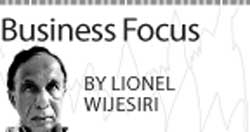20 Nov 2017 - {{hitsCtrl.values.hits}}
Unleashing your leadership potential for breakthrough results

 Most senior managers want changes in structures, systems, processes, procedures and so on to happen quickly, so that the benefits of the change to the organisation can be obtained as soon as possible.
Most senior managers want changes in structures, systems, processes, procedures and so on to happen quickly, so that the benefits of the change to the organisation can be obtained as soon as possible.
Although such changes can be achieved relatively quickly, transformations in culture may take much longer, especially if relatively large numbers of employees are involved.
Managers often describe the culture of an organisation as ‘the way we do things around here’. I’m sure that you can see how such an attitude can inhibit the implementation of change. I prefer to be more precise in describing culture but before reading my description of culture, take a few moments to think about what culture means to you.
Use the following questions as prompts:
Now, let us try to describe what is meant by work culture. Your organisation was formed to achieve certain goals and objectives by bringing individuals together on a common platform and motivating them to deliver their level best.
Work culture plays an important role in extracting the best out of employees and making them stick to the organisation for a longer duration. The organisation must offer a positive ambience to the employees for them to concentrate on their work rather than interfering in each other’s work.
Characteristics
There are few characteristics of a healthy work culture.
1. A healthy work culture leads to satisfied employees and an increased productivity.
2. Employees are cordial with each other. Each one respects his/her fellow worker. Backbiting is present. Everyone agrees that one gains nothing out of conflicts and nasty politics at work.
3. Each employee will be treated as one by the management. Partiality is not available. Employees will be judged only by their work and nothing else. Personal relationship takes a backseat.
4. Top performers are appreciated. Employees are praised for good work from them every time. The ones who have not performed well would not be criticized but will be asked to pull up their socks for the next time. If there are issues confronting them, help would be offered.
5. Discussions are encouraged at the workplace. Employees can discuss issues among themselves to reach to better conclusions. Each one will have the liberty to express his/her views. The team leaders and managers will interact with the subordinates frequently.
6. Transparency is visible at all levels for better relationships among employees and a healthy work culture. Manipulating information and data tampering is a strict rule at the workplace.
7. Policies are employee friendly. Detailed practical guidelines are available. Rules and regulations are made to benefit the employees.
8. Employees are expected to maintain the decorum of the organisation. Discipline is important at the workplace.
9. The ‘Hitler approach’ is not encouraged. Managers are trained to be mentors to the employees. The superiors are expected to provide a sense of direction to the employees and guide them whenever needed.
10. Team building activities are promoted to bind the employees together. Training programmes, workshops, seminars and presentations to upgrade the existing skills of the employees are available.
Looking out for icebergs
If you ever go sailing in the North Atlantic Ocean, you need to look out for icebergs if you want to survive. Similarly, I suggest you do likewise when attempting to transform the culture of your own team, a wider work group or even a whole organisation. Organisational change specialists often use the metaphor of an iceberg to convey the crucial aspects of culture effectively:
n You can see only the tip of a culture (like the visible tip of an iceberg): people’s behaviour and the effects of their behaviour, such as the tidiness of the workplace.
n You can’t see the majority of aspects of a culture: the attitudes, values and beliefs of people.
n You may find that transforming a culture is extremely difficult. The culture of an organisation is solid and well-formed, just like the frozen structure of an iceberg and the culture of a work group or organisation can seem similarly frozen in place.
Here’s one definition of a work culture: culture is the prevailing attitudes, values, beliefs and behaviours of a group, department and/or whole organisation that have a significant effect on the performance of that particular group.
Be careful about trying to push through changes in work systems and so on too quickly because you may hit an iceberg: the ‘out of sight’ aspects of the culture that cause members of the group to passively or actively resist the change.
Diving deep to uncover culture
If you want the members of the group to embrace a change in a work system, process or so on, you’ve no option but to ‘dive deep’ to uncover the culture of a work group. Otherwise you won’t understand the issues or factors that have to be worked through to gain the group’s commitment to embrace the change.
To help get you started, let us say you wish to introduce two changes into the workplace. Out of the two, one was accepted and the other was resisted by your staff.
1. You want to introduce a new quarterly performance appraisal process. Your staff wanted to be clearer about what they were expected to achieve and how well they were doing their assignments. You clearly explained the process and benefits to them and the organisation. The change was accepted.
2. We wanted to impose a less flexible work attendance system. Your staff says flexibility was only abused by a few people but everyone was punished. They believe it was unfair. You accept their views that those abusing the flexible system should be spoken to rather than change the system. The proposal was shelved until next quarter.
Now you see that carrying out a ‘deep dive’ by having conversations with individuals and/or groups affected by a potential change is fruitful. Try to find out what’s important to them that you need to consider when making decisions about the proposed changes.
Scuba divers have a motto: stop, think (and then) breathe. If you’re diving and experience a problem with your breathing apparatus, your natural – and potentially automatic – reaction is to grab an airline from a colleague; but if you do so, you put both of you in danger.
Developing this habit of pausing before reacting is also useful for leaders. After all, people put a lot of effort into promoting or protecting the things that are important to them, including their values and they can become emotional – anxious, frustrated, withdrawn, angry and so on – about the changes in their workplace.
Reactions
As the leader responsible for the change, you don’t want to underestimate or downplay people’s responses by reacting sharply or dismissively when you meet resistance. Don’t be surprised if you find people apparently over-reacting to changes that you intend to make; they’re just letting you know how important something is to them.
Their reaction is also your prompt to do a ‘deep dive’ and discover their underlying concerns and fears about the changes you’re proposing. Use the diver’s motto ‘stop, think, breathe’ when you experience people adversely reacting towards or resisting the changes you propose, to ensure that you don’t do or say something that you may later regret.
(Lionel Wijesiri is a retired corporate director counting three decades of senior management experience. He is now an independent consultant and a freelance journalist. He may be contacted on [email protected])
29 Dec 2024 44 minute ago
29 Dec 2024 1 hours ago
29 Dec 2024 1 hours ago
29 Dec 2024 2 hours ago
29 Dec 2024 5 hours ago